Removal Procedure
- Ensure that the fuel level in the tank is less than 1/4 full. If necessary, drain the fuel tank to at least this level. Refer to Fuel Tank Draining .
- Position the vehicle on a hoist.
- Relieve the fuel system pressure. Refer to Fuel Pressure Relief .
- Disconnect the negative battery cable.
- Raise the vehicle on a hoist.
- Remove the rubber exhaust hangers on order to allow the exhaust system to drop slightly.
- Remove the propeller shaft guard, if equipped.
- Remove the propeller shaft, if equipped. Refer to Propeller Shaft Replacement in Propeller Shaft.
- Disconnect the EVAP canister vent and fresh air hoses:
- Remove the fuel filler pipe, EVAP vent hose, and fresh air hose from the fuel tank.
- Disconnect the chassis fuel supply line from the fuel filter outlet.
- Disconnect the fuel tank ground strap fastener.
- Disconnect the fuel tank electrical connector.
- Support the fuel tank.
- Remove the fuel tank strap bolts and fuel tank straps.
- Lower the fuel tank from the underbody of the vehicle.
Caution: Do not allow smoking or the use of open flames in the area where work on the fuel or EVAP system is taking place. Anytime work is being done on the fuel system, disconnect the negative battery cable, except for those tests where battery voltage is required.
Caution: Ensure that the vehicle is properly supported and squarely positioned. To help avoid personal injury when a vehicle is on a hoist, provide additional support for the vehicle on the opposite end from which the components are being removed.
Caution: Fuel supply lines will remain pressurized for long periods of time after the engine is shutdown. This pressure must be relieved before servicing the fuel system.
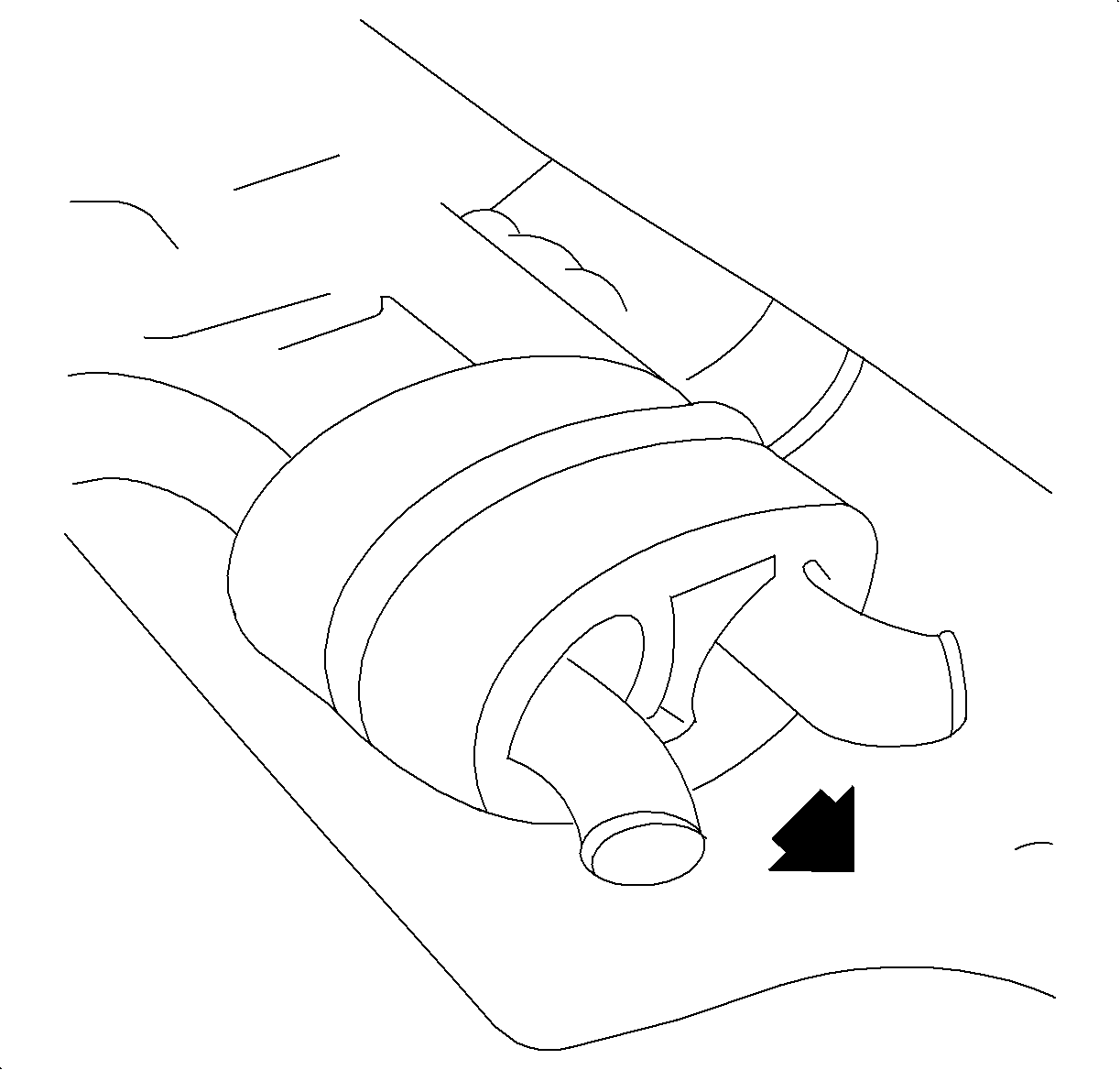
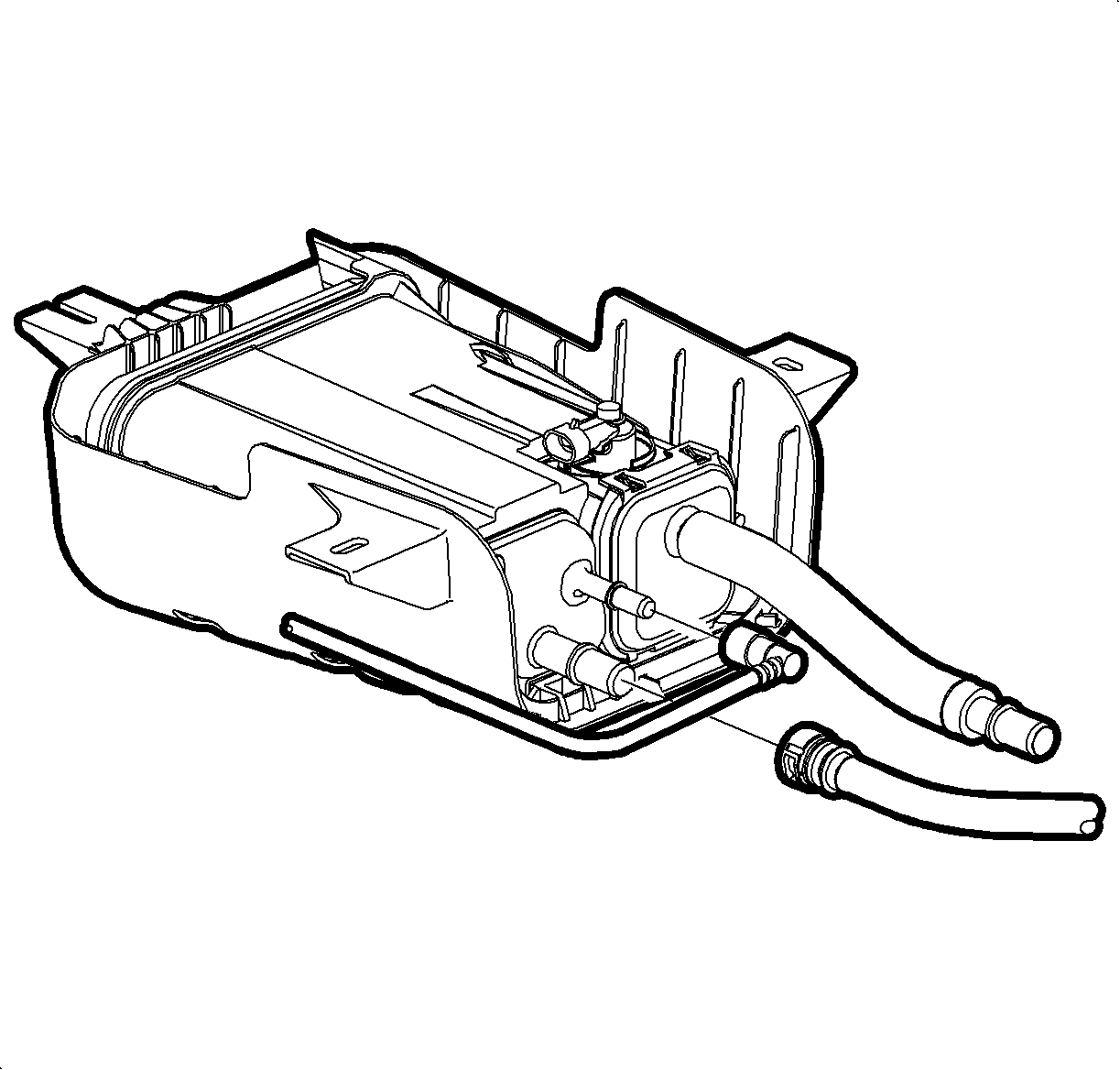
Notice: Clean all fuel pipe connections and surrounding areas before disconnecting the fuel pipes to avoid contamination of the fuel system.
| 9.1. | Grasping both sides of the quick-connect fitting, twist the female connector 1/4 turn in each direction in order to loosen dirt within the quick-connect fitting. |
| 9.2. | Blow any dirt out of the quick-connect fitting using compressed air. |
| 9.3. | Squeeze the plastic retainer release tabs. |
| 9.4. | Pull the connection apart. |
| 9.5. | Inspect both ends of the quick-connect fitting for dirt and burrs. |
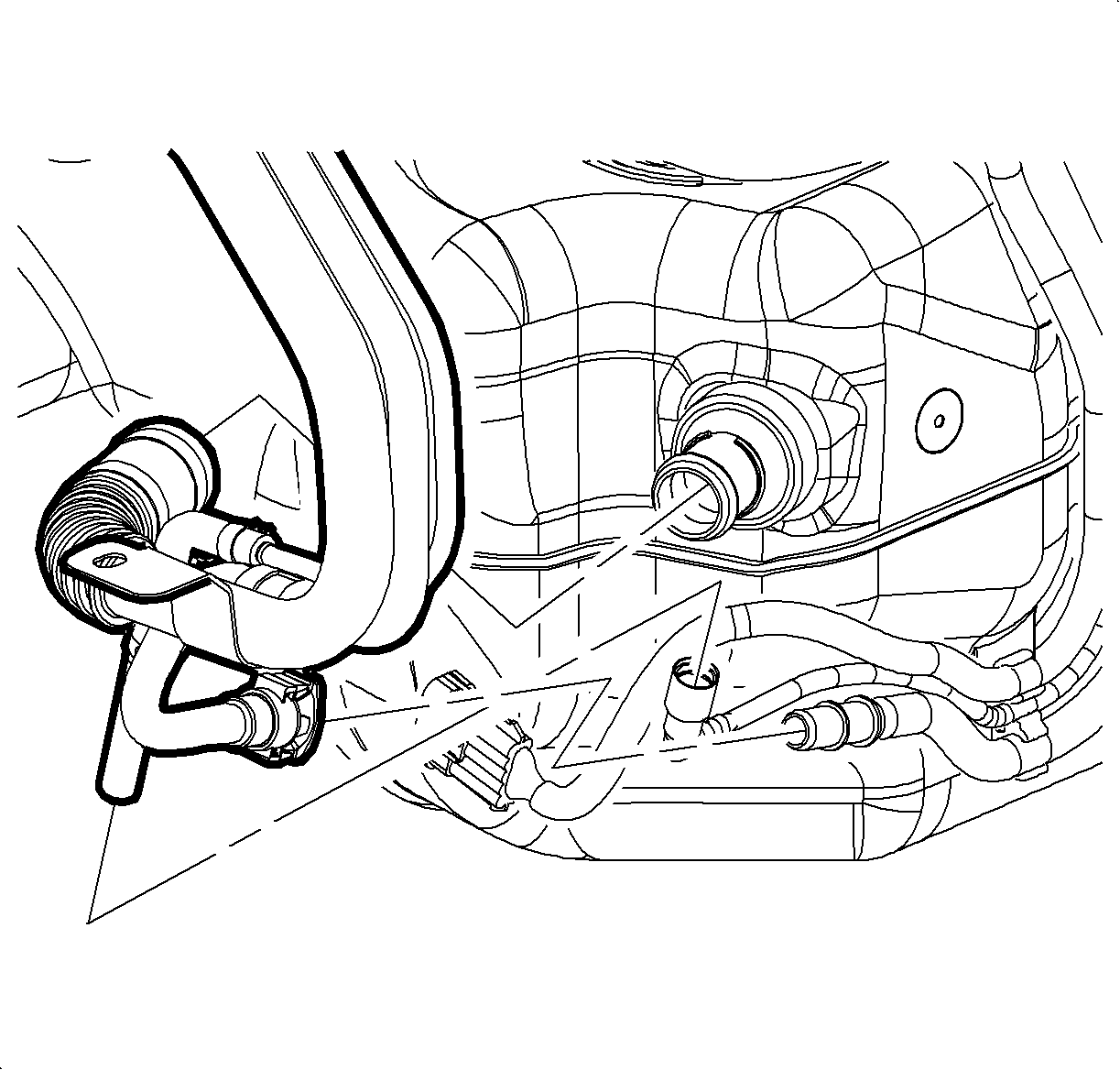
Caution: Whenever fuel lines are removed, catch fuel in an approved container. Container opening must be a minimum of 300 mm (12 in) diameter to adequately catch the fluid.

Notice: Do not bend the fuel tank straps. Bending the fuel tank straps may cause damage to the straps.
Important: Do not disassemble the RDM. It is not necessary to touch the RDM for fuel tank removal.
Disassembly Procedure
- Place the fuel tank in a suitable work area.
- Remove the primary fuel pump module from the fuel tank. Refer to Primary Fuel Tank Module Replacement .
- Remove the secondary fuel pump module from the fuel tank. Refer to Secondary Fuel Tank Module Replacement .
- Remove the fuel and EVAP lines from the fuel tank.
- Remove the electrical harness from the fuel tank.
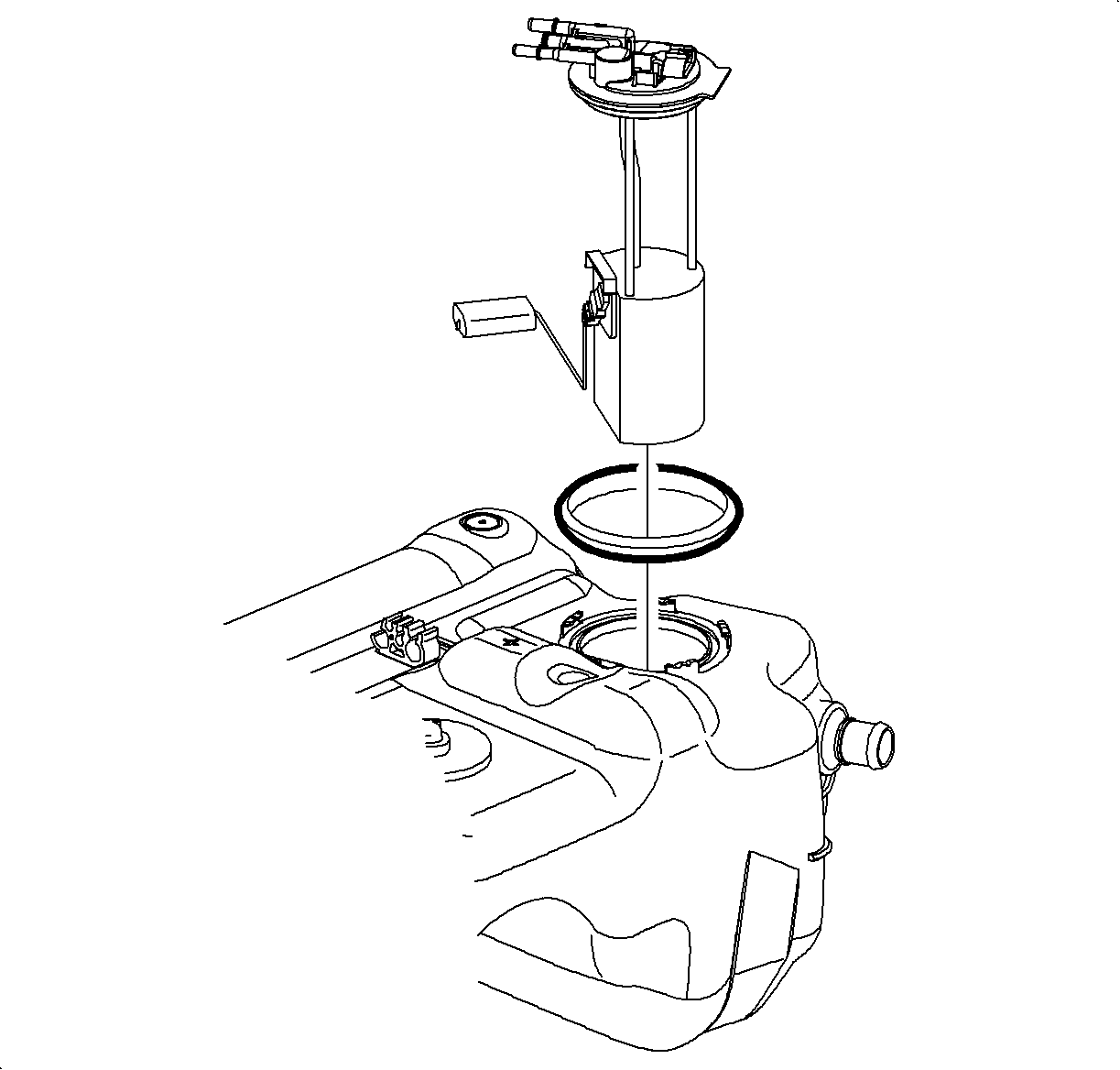

Assembly Procedure
- Install the primary fuel pump module into the fuel tank. Refer to Primary Fuel Tank Module Replacement .
- Install new the new fuel filter onto the fuel tank.
- Install the fuel and EVAP lines onto the fuel tank:

Important: Always replace the fuel pump module-to-tank seal, H-ring, whenever the assembly is removed.
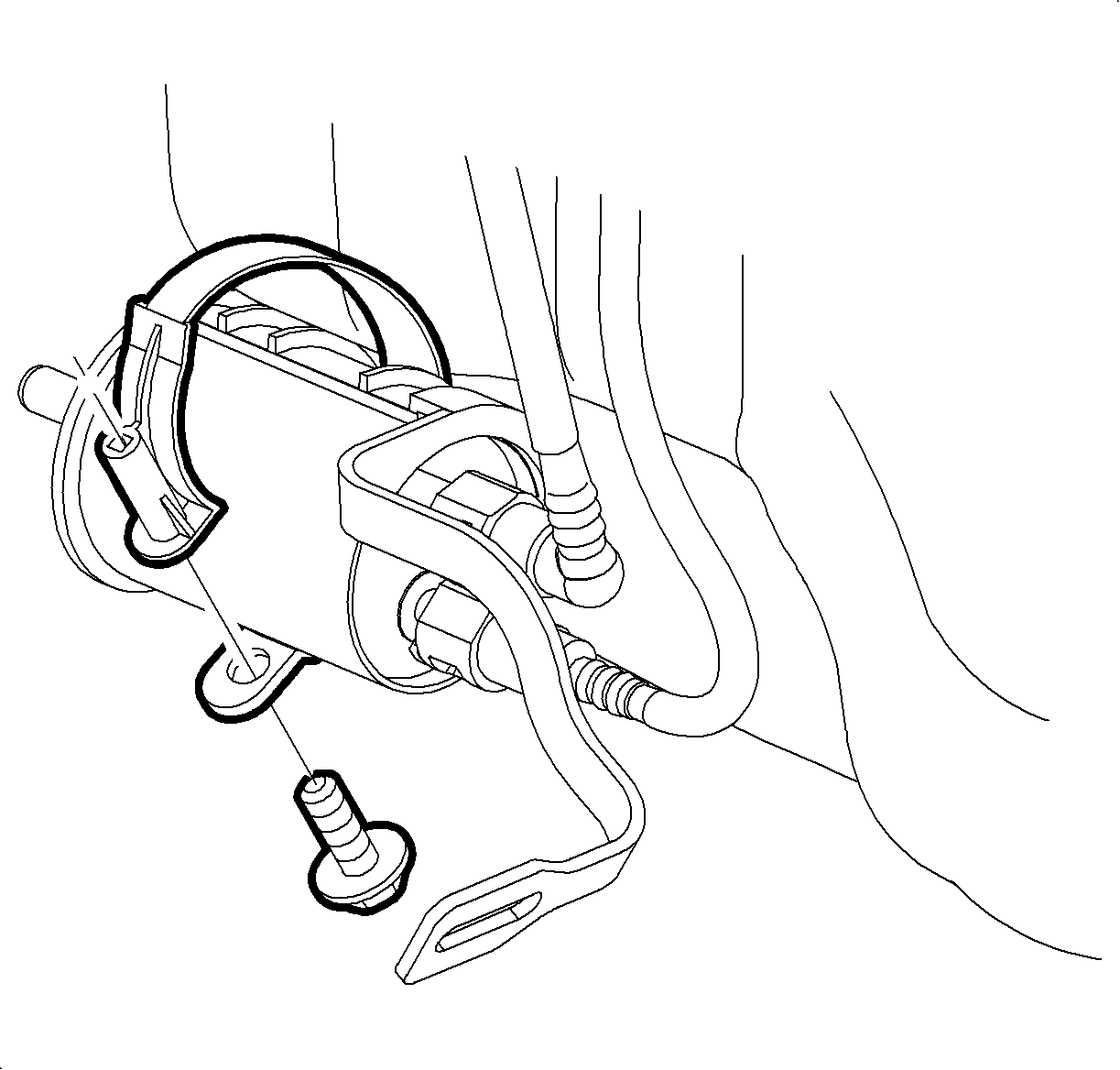
Tighten
Tighten the fuel filter bracket bolt to 2 N·m
(18 lb in).
| 3.1. | Apply a few drops of clean engine oil to the male fuel pipe end. |
| 3.2. | Push both sides of the quick-connect fitting together in order to cause the retaining tabs/fingers to snap into place. |
| 3.3. | Pull both sides of the quick-connect in order to make sure the connection is secure, once installed. |
Installation Procedure
- Install the fuel tank heat shield and fuel tank assembly into the vehicle.
- Install the fuel tank straps and tighten the bolts.
- Install the fuel filler pipe, EVAP vent, and fresh air hoses to the fuel tank.
- Tighten the hose clamp on the filler pipe-to-fuel tank connecting hose.
- Install the fuel tank ground strap fastener, by the fuel filter.
- Connect the EVAP canister vent and fresh air hoses to the fuel tank hoses.
- If equipped, install the propeller shaft. Refer to Propeller Shaft Replacement in Propeller Shaft.
- If equipped, install the propeller shaft guard.
- Install the rubber exhaust hangers.
- Lower the vehicle from the hoist.
- Fill the fuel tank with gasoline.
- Connect the negative battery cable.
- Prime the fuel system:
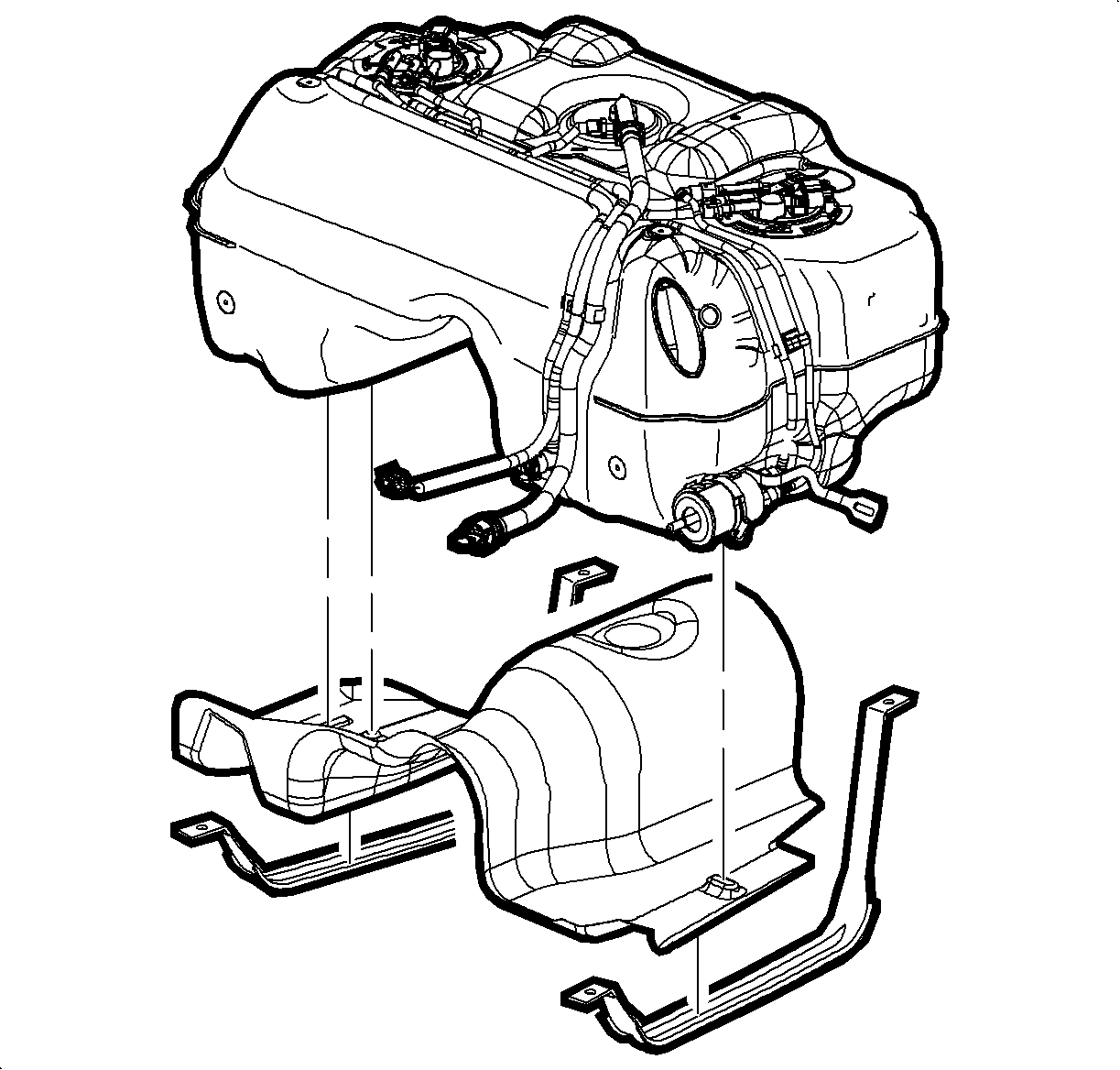

Tighten
Tighten the fuel tank strap-to-body bolts to 25 N·m
(18 lb ft).

Tighten
Tighten the fuel fill neck-to-fuel tank clamp to
5 N·m (44 lb in).
Tighten
Tighten the ground strap-to-body bolt to 8 N·m
(71 lb in).


Tighten
Tighten the battery terminal bolt to 17 N·m
(13 lb ft).
| 13.1. | Cycle the ignition ON for 5 seconds and then OFF for 10 seconds. |
| 13.2. | Repeat the previous step twice. |
| 13.3. | Crank the engine until it starts. The maximum starter motor cranking time is 20 seconds. |
| 13.4. | If the engine does not start, repeat steps 13.1-13.3. |
